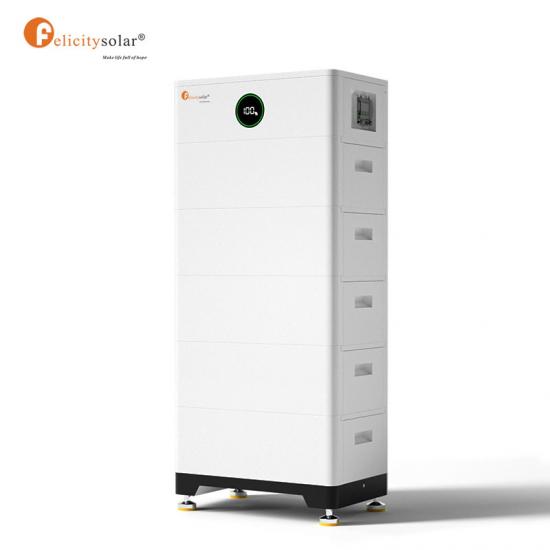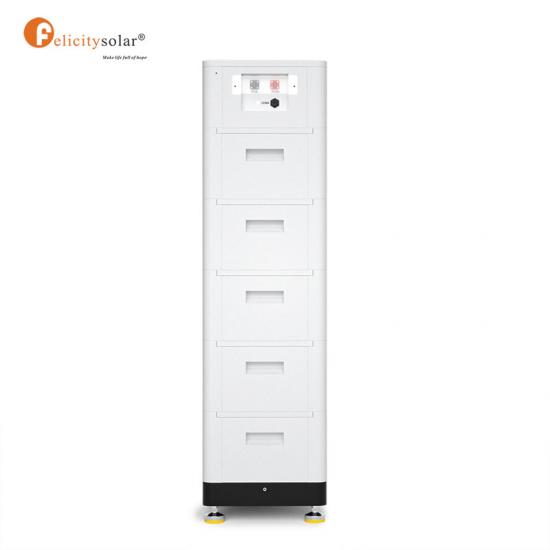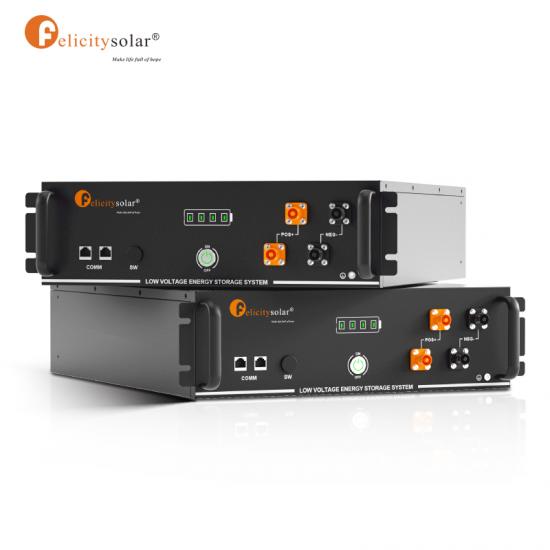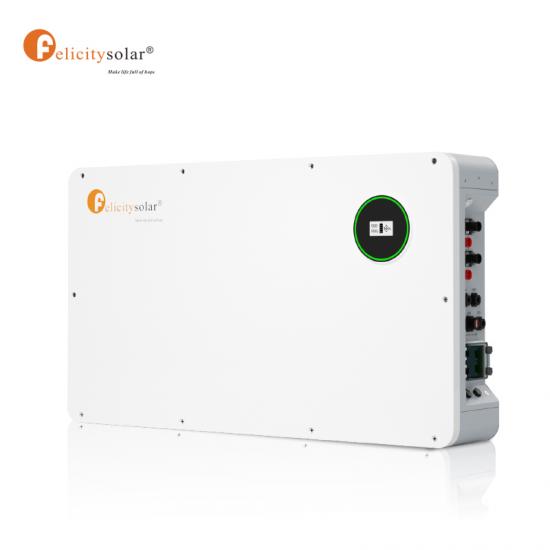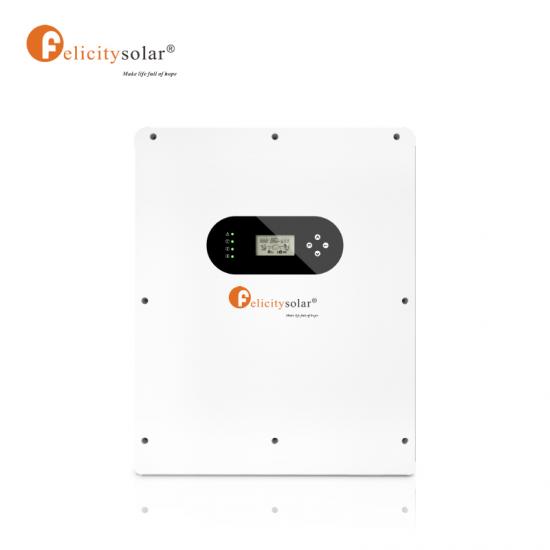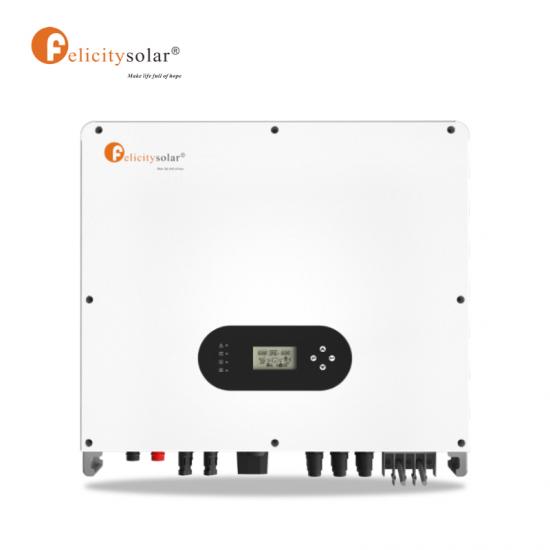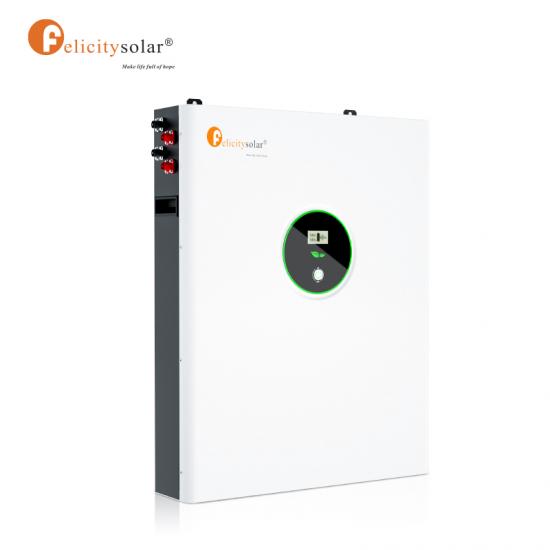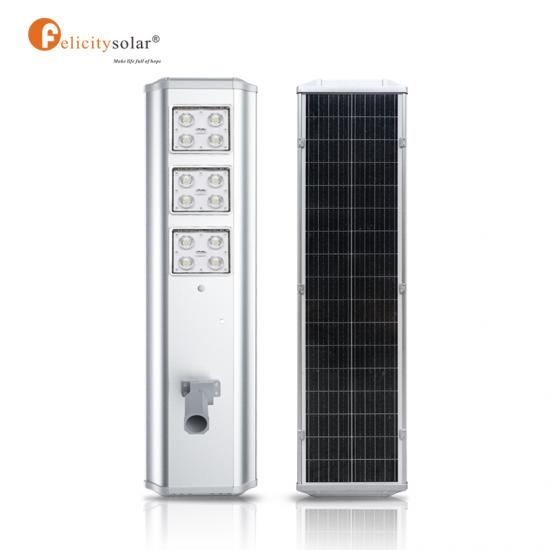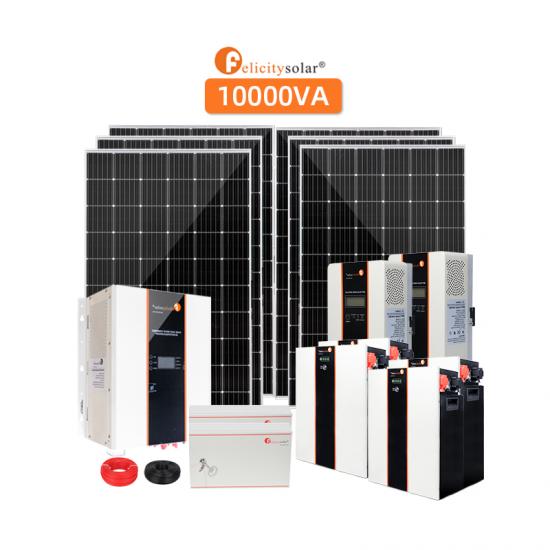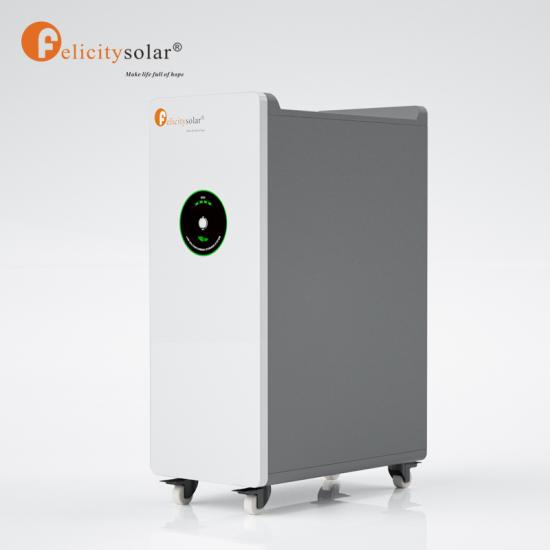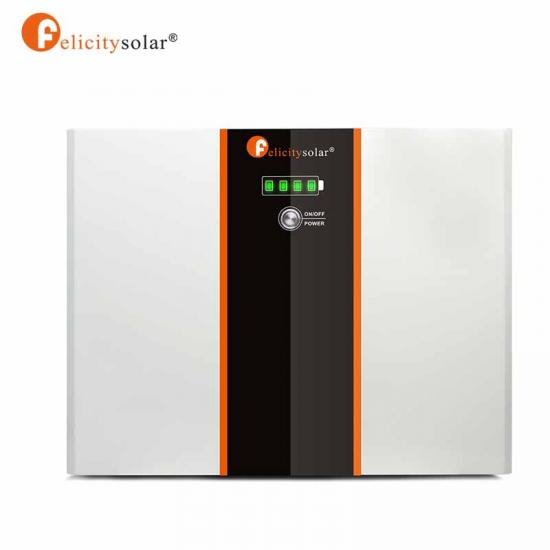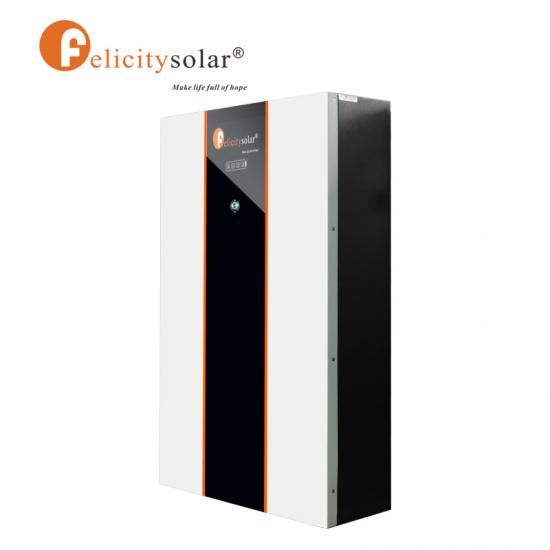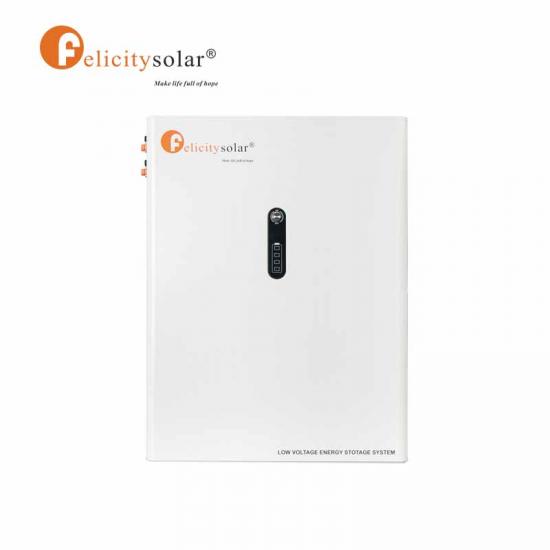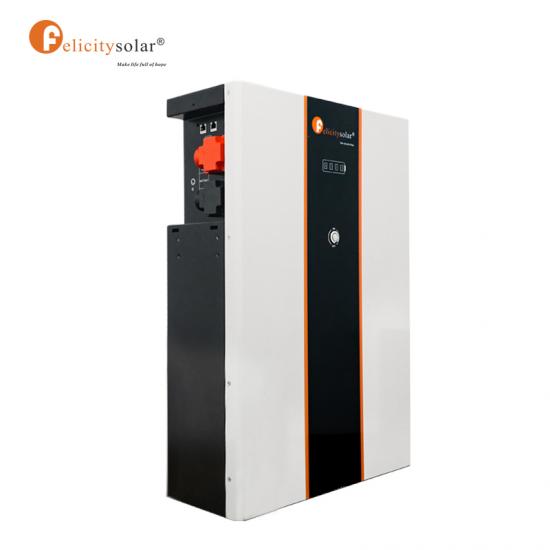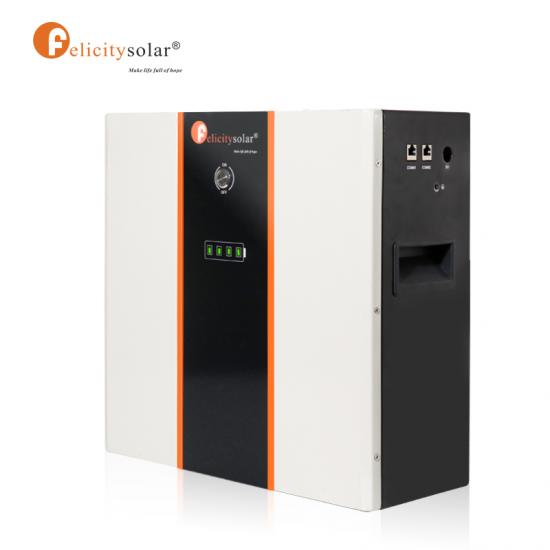2. HVC-BCU is the controller of the whole system, so each system must have one HVC-BCU;
3. Our system consists of at least 1 HVC-BMU + 1 HVC-BCU and up to 5 HVC-BMU + 1
HVC-BCU.
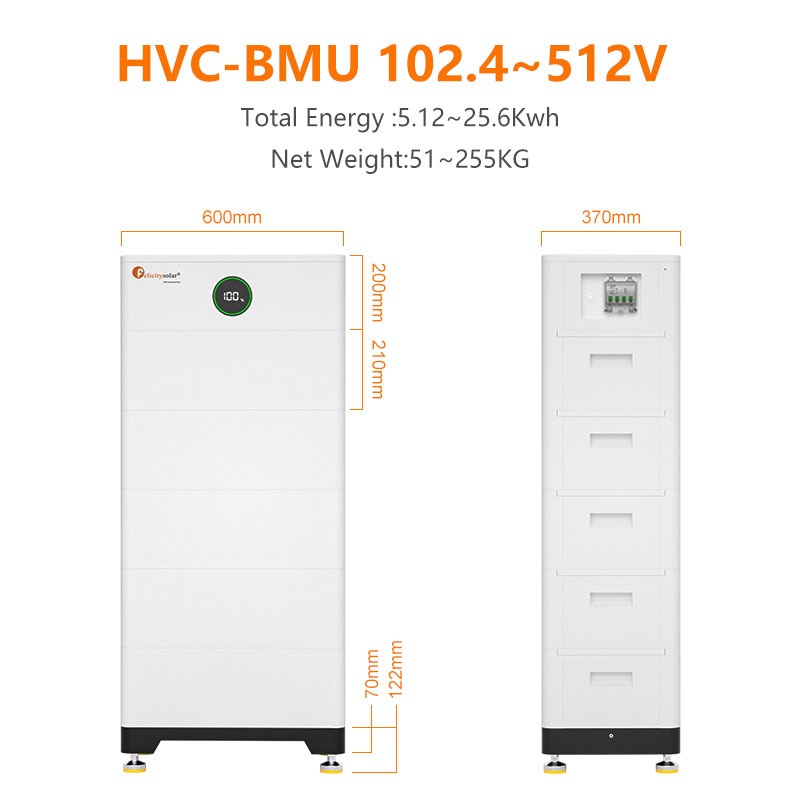
Battery Module Specifications
| Specidications for HVC-BMU | |
| Battery Module | HVC-BMU |
| Total Energy [Kwh] | 5.12 |
| Nominal Voltage [V] | 102.4 |
| MAX. Charge Voltage [V] | 115.2 |
| MIN. Discharge Voltage [V] | 96 |
| Max. Chargeing Current [A] | 30 |
| Max. Discharge Current [A] | 30 |
| Communication | CAN,RS485 |
| Enclosure Protection Rating | IP65 |
| Working Temperature Range [℃] | -10 ~ 50 |
| Cycle Life | >6000 Cycle@80% DOD/25℃ |
| Net Weight(KG) | 51 |
| Gross Weight(KG) | 54 |
| Product Dimension(MM) | 600*370*210 |
| Package Dimension(MM) | 712*482*328 |
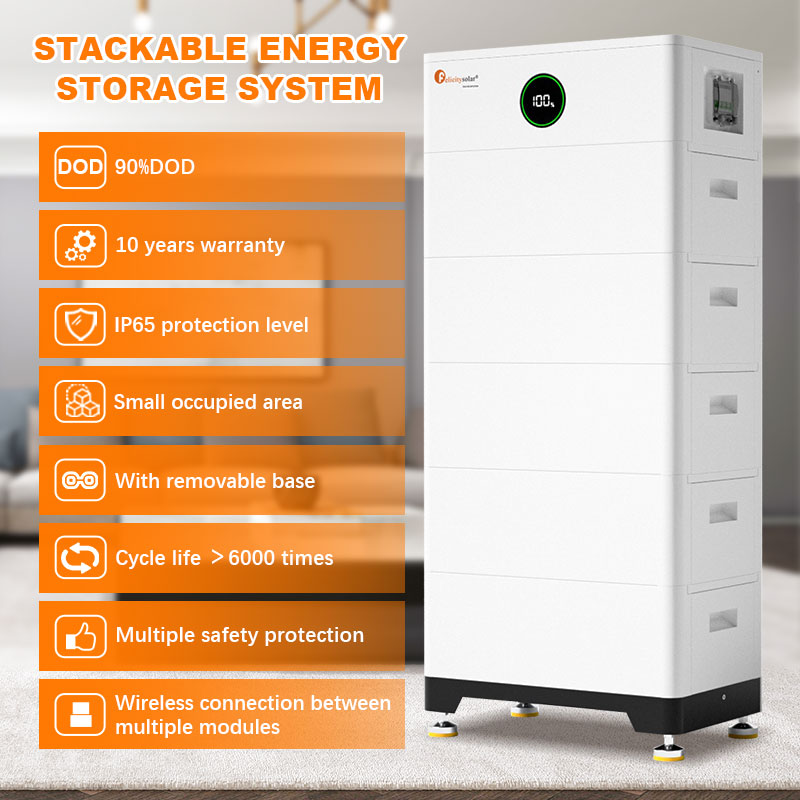
Specifications for HVC-BCU
Model No.
HVC-BCU
Operating Voltage Range(v)
80-576
Max. Charge/discharge Current (A)
30
Total Voltage Measurement Accuracy
±1.0%FSR
Communication
CAN,RS485
Available Soc Range
10%~100%
Charge/discharge Efficiency (%)
>98
Working Temperature Range [℃]
-10 ~ 50
Enclosure Protection Rating
IP65
Net Weight(KG)
12
Gross Weight(KG)
24.5
Product Dimension(MM)
600*370*200
Package Dimension(MM)
712*482*403
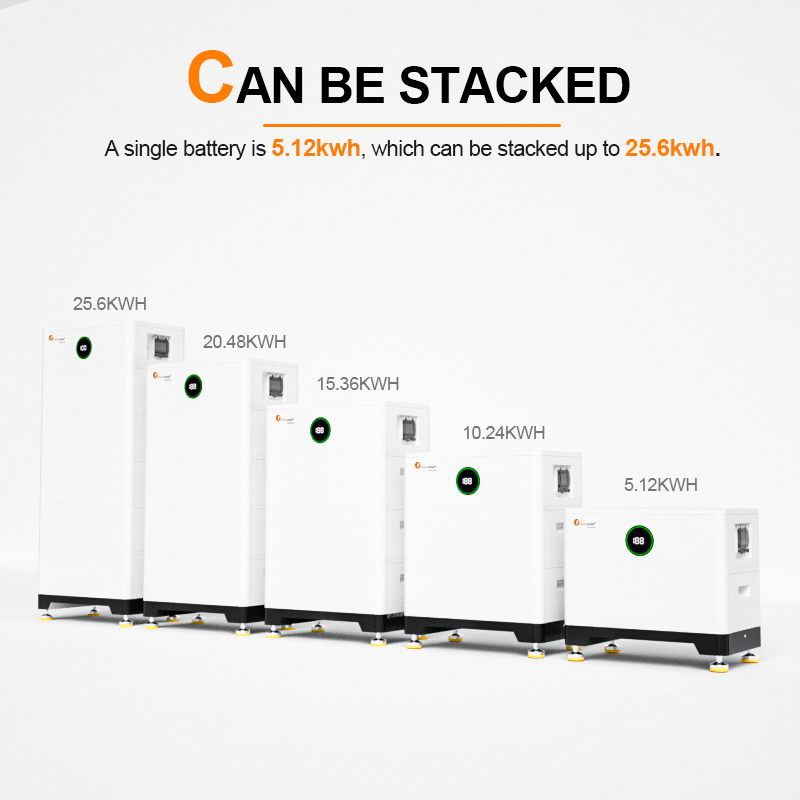
Specifications for Battery System
BATTERY SYSTEM
HVC 5.1
HVC 10.2
HVC 15.4
HVC 20.5
HVC 25.6
Battery Module
HVC-BMU(5.12kwh,102.4V)
Number of Modules
1
2
3
4
5
Total Energy [Kwh]
5.12
10.24
15.36
20.48
25.6
Usable Energy [kWh] (90%DOD)
4.6
9.2
13.8
18.4
23
Nominal Voltage [V]
102.4
204.8
307.2
409.6
512
MAX. Charge Voltage [V]
115.2
230.4
345.6
460.8
576
MIN. Discharge Voltage [V]
96
192
288
384
480
Weight [Kg]
51
102
153
204
255
Dimension [W x D x H, mm]
600/370/(322+210xN)
Max. Chargeing Current [A]
30
Max. Discharge Current [A]
30
Communication
CAN,R485
Enclosure Protection Rating
IP65
Working Temperature Range [℃]
-10~50
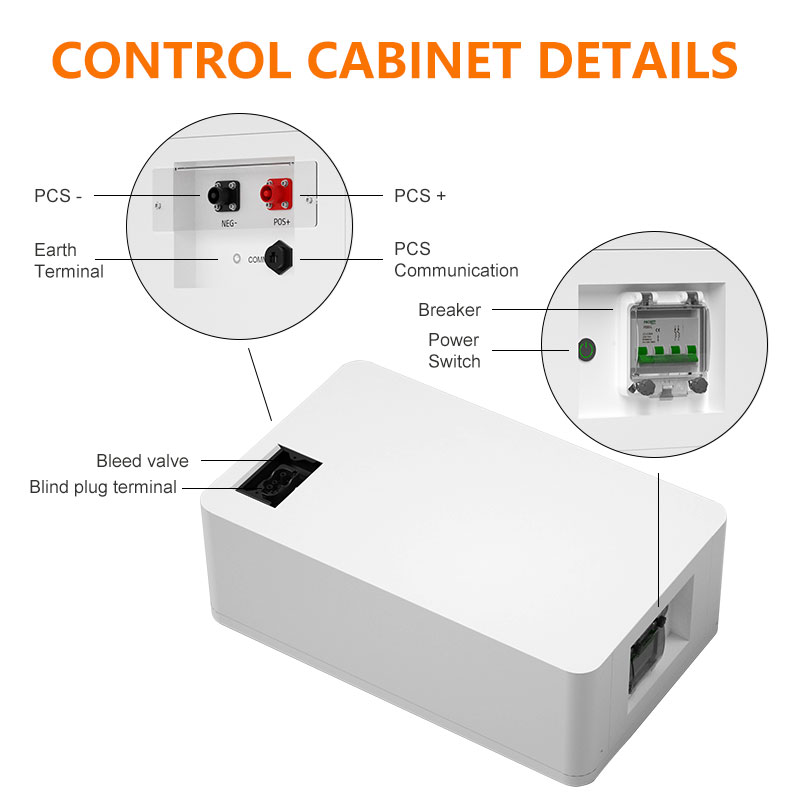
The batteries have been fitted with multiple protection systems to ensure the safe operation of the system.
Some of the protection system includes:
• Inverter interface protection: Over voltage, Over current, External Short Circuit, Reverse Polarity,Ground
Fault, Over Temp, In rush current.
• Battery Protection: Internal Short Circuit, Over voltage, over current, over temp, Under voltage The battery
system contains the following Interface to allow it to connect and operate efficiently
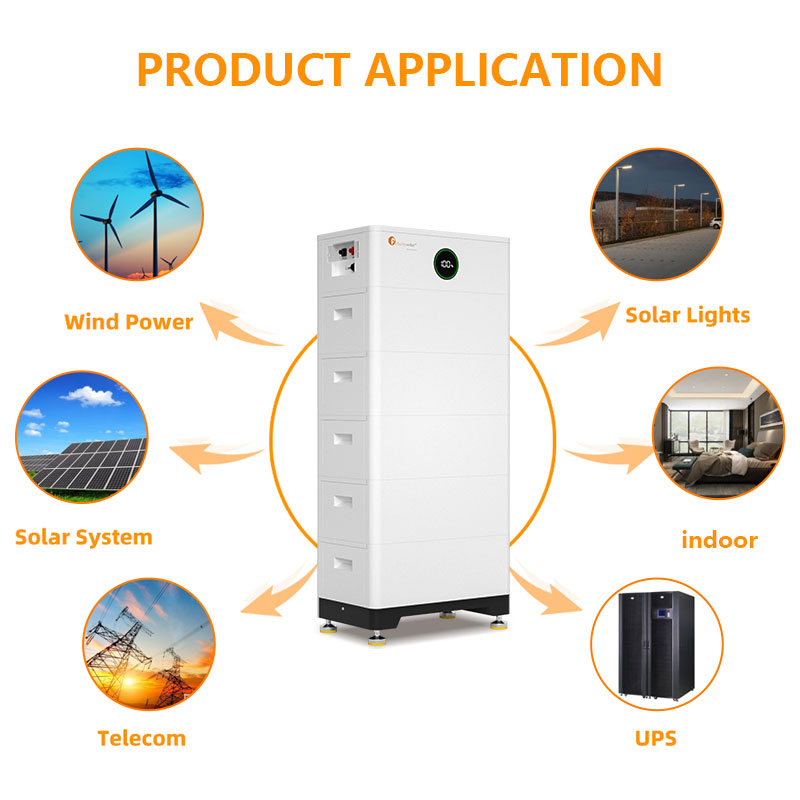
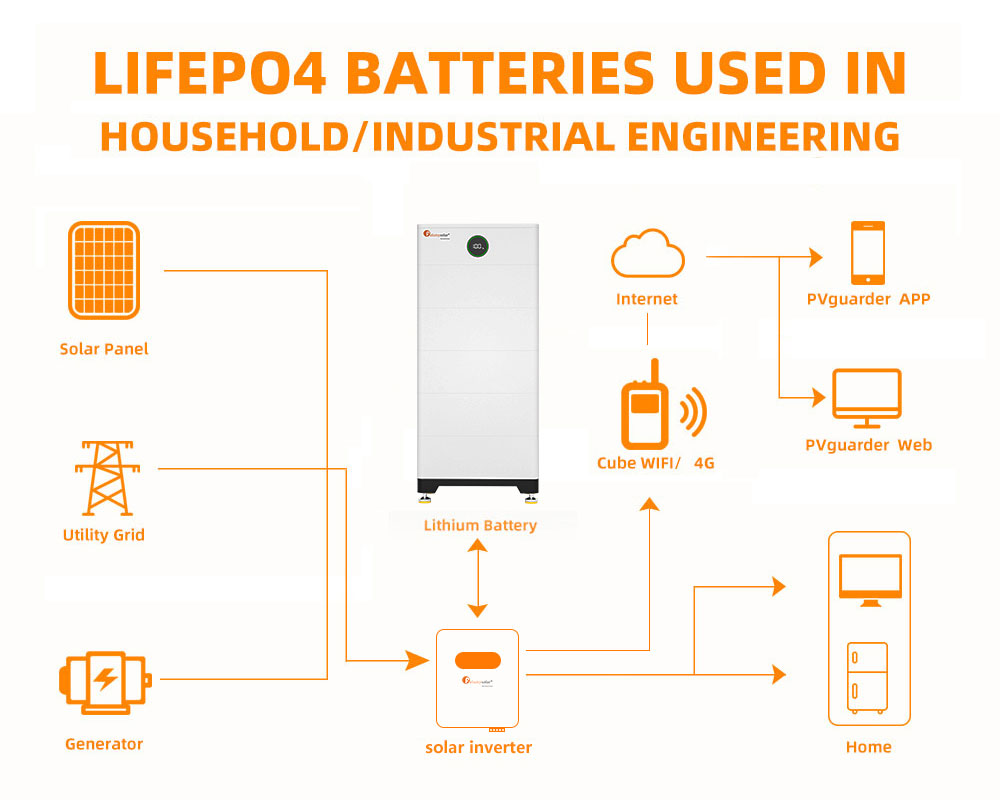
RFQ
1.How to choose suitable inverter?
If your load is resistive loads, such as: bulbs, you can choose a modified wave inverter. But if it is inductive loads and capacitive loads, we recommend using pure sine wave power inverter.
2.How do I choose the size of the inverter?
Different types of load demand for power are different. You can view the load power values to determine the size of the power inverter.
3.How to calculate the load of working hours requires configuration of the battery size?
We will usually have a formula to calculate, but it is not hundred percent accurate, because there is also the battery's condition, the old batteries have some loss,so this is only a reference value:
Work hours = battery capacity * battery voltage * 0.8/load power (H= AH*V*0.8/W)













